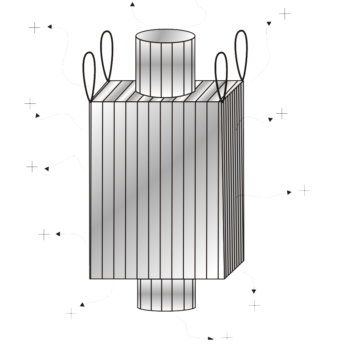With Valve / Without Valve
With Valve / Without Valve

FIBC (Flexible Intermediate Bulk Container) bags, also known as bulk bags or jumbo bags, are widely used for transporting and storing bulk materials. When it comes to FIBC bags, they can be categorized into two main types: bags with valves and bags without valves.
A valve on an FIBC bag refers to an additional feature that allows for controlled filling or discharge of the bag’s contents. The valve is typically a spout or chute located at the bottom or side of the bag, which can be opened or closed as needed. This valve facilitates efficient loading and unloading of materials, enabling precise metering and minimizing product loss or spillage.
FIBC (Flexible Intermediate Bulk Container) bags, also known as bulk bags or jumbo bags, are widely used for transporting and storing bulk materials. When it comes to FIBC bags, they can be categorized into two main types: bags with valves and bags without valves.
- FIBC Bags With Valve: FIBC bags with valves have a specially designed discharge valve at the bottom. This valve allows for controlled and efficient emptying of the bag’s contents. The valve can be opened or closed as needed, which helps regulate the flow of materials during discharge. FIBC bags with valves are commonly used when the material being transported needs to be precisely measured, controlled, or discharged at a controlled rate. They are especially useful for fine or powdery materials.
- FIBC Bags Without Valve: FIBC bags without valves do not have a discharge valve at the bottom. Instead, they are typically filled from the top and emptied by tipping or cutting open the bag. These bags are suitable for materials that can flow freely or materials that are not sensitive to the speed or control of discharge. FIBC bags without valves are commonly used for bulk materials such as grains, sand, gravel, or construction materials.
The choice between FIBC bags with a valve and without a valve depends on the specific requirements of the material being transported, stored, or handled. Factors to consider include the flow characteristics of the material, desired control over-discharge, ease of filling and emptying, and the overall handling process.
It’s important to consult with the manufacturer or supplier of FIBC bags to determine the most appropriate type for your specific application and material requirements. They can provide guidance based on their expertise and knowledge of the products they offer.








